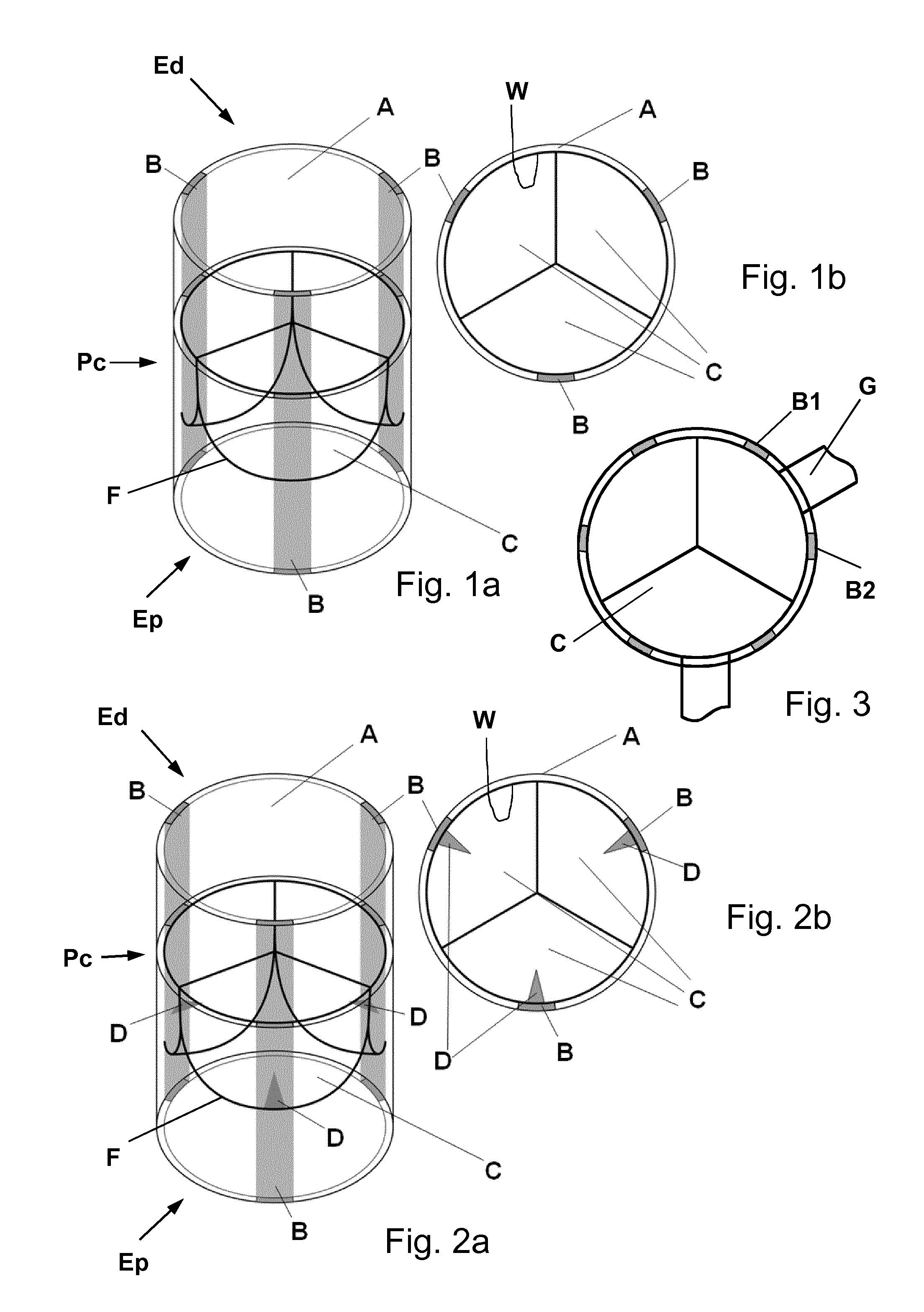Biological heart valve replacement, particularly for pediatric patients, and manufacturing method
a heart valve and biotechnology, applied in the field of biological heart valve replacement, can solve the problems of lack of growth-adaptive capacity, prone to thromboembolic complications of metal-based “mechanoprostheses” and other problems, to achieve the effect of supporting the maintenance of a physiological geometry of the heart valve and improving the “growth” adaptation
- Summary
- Abstract
- Description
- Claims
- Application Information
AI Technical Summary
Benefits of technology
Problems solved by technology
Method used
Image
Examples
example
Valve Replacement in Pediatric Patients Needing Aortic Valve Repair
[0058]In pediatric patients with the necessity for aortic valve repair (e.g. due to congenital aortic valve stenosis) the necessity for repeated reoperation leads to an increased morbidity and mortality. Such patients are expected to benefit from a heart valve replacement as explained herein.
[0059]For this purpose, human donor cells (i.e. cells isolated from healthy donor vessels) are used for the in vitro fabrication of a tissue engineered matrix. Briefly, isolated vascular myofibroblastic cells are seeded onto a biodegradable PGA-P4HB-based starter matrix. After static incubation, the construct is placed into a pulsatile dynamic flow bioreactor system for the in vitro generation of a tissue engineered matrix via biomimetic conditioning. Next, the matrix is decelllularized using a standardized protocol (detailed protocol published by Dijkman PE 2012, see references). The human cell-derived decellularized homologous ...
PUM
| Property | Measurement | Unit |
|---|---|---|
| Diameter | aaaaa | aaaaa |
| Length | aaaaa | aaaaa |
| Area | aaaaa | aaaaa |
Abstract
Description
Claims
Application Information
 Login to View More
Login to View More - R&D
- Intellectual Property
- Life Sciences
- Materials
- Tech Scout
- Unparalleled Data Quality
- Higher Quality Content
- 60% Fewer Hallucinations
Browse by: Latest US Patents, China's latest patents, Technical Efficacy Thesaurus, Application Domain, Technology Topic, Popular Technical Reports.
© 2025 PatSnap. All rights reserved.Legal|Privacy policy|Modern Slavery Act Transparency Statement|Sitemap|About US| Contact US: help@patsnap.com


